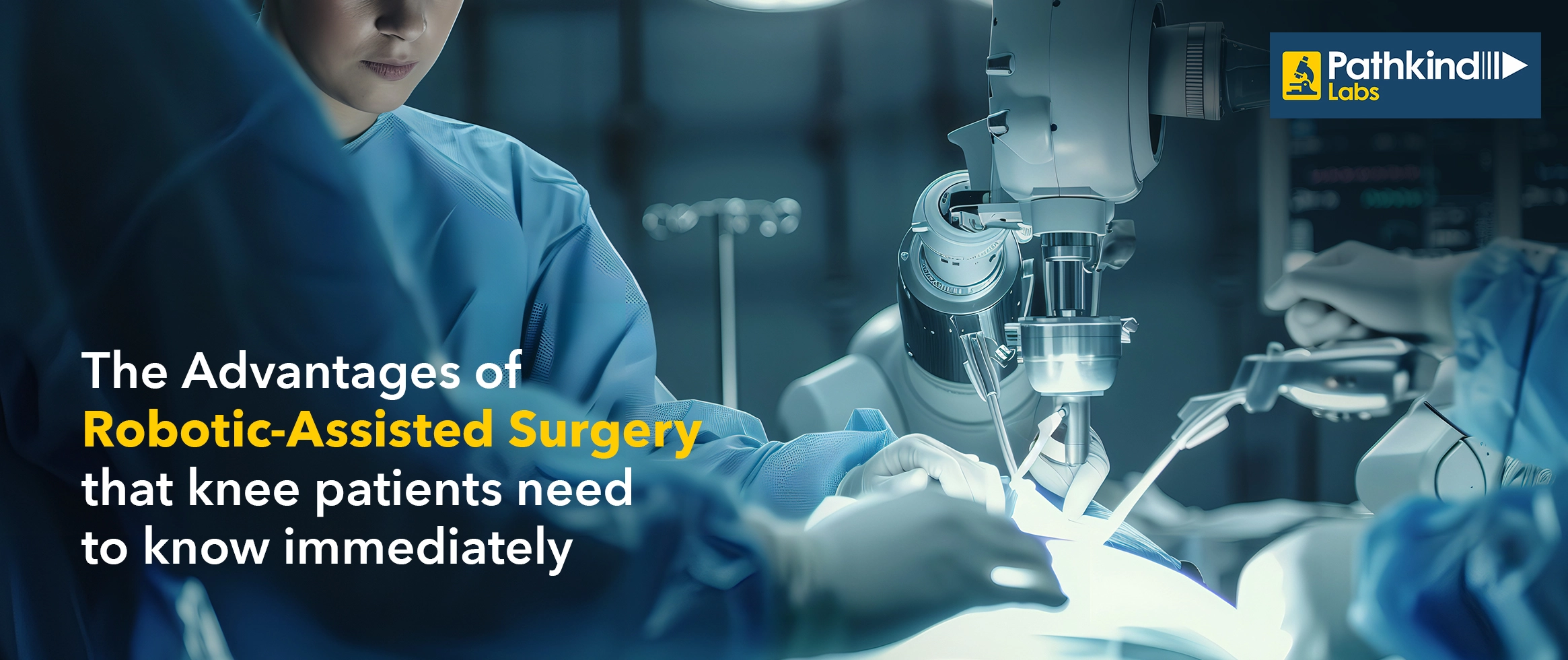
We’ll confirm your booking shortly!
Please provide your number to receive updates.
Enter the 6-digit verification code we just sent you to through SMS. Change Mobile

A contemporary method called robotic surgery incorporates robotic equipment to carry out surgeries with extreme accuracy. It gives surgeons more control and dexterity while performing procedures through small incisions. Compared to standard surgery, this is a less invasive method that frequently yields quicker recovery periods, less discomfort, and fewer problems. Robotic-assisted surgery is widely utilised in numerous specialities such as cardiology, gynaecology and urology. It is proving to be transformational, especially for knee patients requiring a transplant.
A robotic surgery consists of three core components that include:
A robotic-assisted surgery involves a surgeon responsible for creating small incisions in the body. Once the body has been cut open, a highly defined camera and surgical instruments are inserted inside it. Once those tools are inserted, the surgeon uses a console to manipulate the movements of the inserted equipment.
Robotic-assisted surgery has been growing popular in the healthcare industry. Let’s look at the benefits of robotic-assisted surgery, especially for patients recovering after a robotic knee replacement surgery.
Although the useful benefits of robotic-assisted surgery have been growing rapidly in the healthcare industry, the complications that are associated with robotic surgery should not be ignored.
Recovery after a post-robotic surgery consumes less time than the traditional process, and the patient might not suffer from severe post-surgery side effects. Here are some simple strategies to follow a post-robotic surgery.
Robotic-assisted surgery is known for improving control and precision, which results in a speedier recovery and diminishes the emergence of problems in the future. The advantages of robotic-assisted surgery have been steadily growing in the healthcare industry. Moreover, the precision and consistency involved in the operation are improved during the robotic knee replacement surgery, resulting in a better outcome for the patients.
Discover precision diagnostics with Pathkind Labs, a trusted name in diagnostic services in India. Our NABL accredited labs, equipped with advanced technology, are staffed by a certified team of over 200+ senior pathologists and 2000+ technicians. From tailored health check-ups to specialized tests in Oncology, Neurology, Gynaecology, Nephrology, and more, we've got your health covered. Skip the hassle with online booking for tests or check-ups, available for both lab visits and at-home blood collection. For a seamless experience and early detection, choose Pathkind Labs in Gurugram. Book your appointment today and experience diagnostics made easy.
© 2025 Pathkind Diagnostics Pvt. Ltd. All Rights Reserved | Unsubscribe
